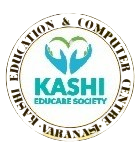A DCA (Diploma in Computer Applications) course is designed to provide students with foundational knowledge and skills in computer science, applications, and various technologies that are used in business and personal computing. The course typically lasts for about 6 months to 1 year and is focused on practical training and hands-on experience.
Here’s a typical course content outline for a DCA (Diploma in Computer Applications):
1. Introduction to Computers
- Basics of computer systems (Hardware and Software)
- Types of computers (Personal, Mainframe, Supercomputers)
- Introduction to Operating Systems (Windows, Linux, etc.)
- Computer peripherals (Mouse, Keyboard, Printer, etc.)
- Basic Computer Terminology
2. Computer Fundamentals
- Introduction to computer hardware components
- Data representation and number systems
- Software: System software vs. Application software
- Understanding memory (RAM, ROM, Cache memory, etc.)
- Input/Output devices and their working
3. Operating Systems
- Operating System Basics (Functions, Types, and Components)
- Introduction to Windows OS (File management, Control Panel, Task Manager)
- Introduction to Linux (Basic commands, File system structure)
- File Management: Creating, Renaming, Deleting, Moving Files
- Process Management and Resource Allocation
4. Word Processing (MS Word)
- Introduction to MS Word and its interface
- Creating, editing, and formatting documents
- Inserting tables, pictures, hyperlinks, headers, and footers
- Advanced features (Mail Merge, Macros, Styles)
- Document Review and Collaboration tools (Track Changes)
5. Spreadsheet Applications (MS Excel)
- Introduction to MS Excel and its interface
- Creating and managing workbooks and worksheets
- Data entry and formatting cells (numbers, text, dates)
- Formulas and Functions (SUM, AVERAGE, IF, VLOOKUP, etc.)
- Charts and Graphs (Pie, Bar, Line, etc.)
- Data analysis tools (Pivot Tables, Sorting, Filtering)
6. Presentation Software (MS PowerPoint)
- Introduction to MS PowerPoint and its interface
- Creating and designing presentations
- Working with text, images, videos, and multimedia elements
- Using animations, transitions, and slide layouts
- Creating interactive presentations (Hyperlinks, Action Buttons)
7. Database Management (MS Access / MySQL)
- Basics of Database Management System (DBMS)
- Creating tables, queries, and relationships
- Data entry, editing, and form creation
- Database operations (Sorting, Filtering, Search)
- Introduction to SQL (Basic Queries, Joins, Aggregates)
- Report generation and data validation
8. Internet and Email
- Introduction to the Internet and Web Browsers (Google Chrome, Firefox)
- Web searching and Internet safety
- Email (Creating an Email account, Sending, Receiving, and Organizing Emails)
- Basic Internet protocols (HTTP, HTTPS, FTP)
